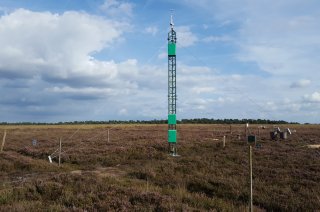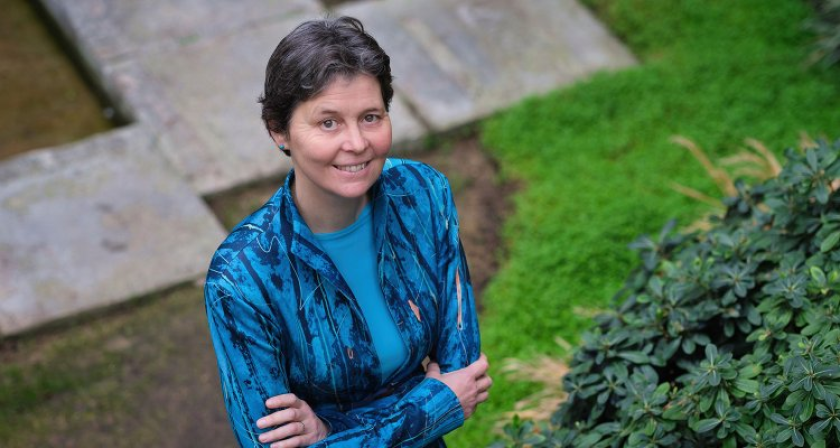
category_news
Inauguration Margreet van Zanten: ‘What goes up must come down
In the Netherlands, air quality often leaves much to be desired. However, better understanding of how airborne substances spread and deposit can help to take more effective measures. Margreet van Zanten - Special Professor of Emission, dispersion, and deposition of atmospheric constituents - studies atmospheric processes and works on integrating these processes into mathematical models. She aims to strengthen this combination.
Van Zanten will deliver her inaugural lecture on November 1st. Her research focuses on nitrogen deposition and on mapping the emissions of greenhouse gases and air pollutants more precisely. She was appointed special professor last February. The chair is funded by the Dutch National Institute for Public Health and the Environment (RIVM), where she has been working on these subjects as head of the National Emission Inventory for over 15 years.

What happens in the air
‘We see a series of processes happen in the atmosphere,’ Van Zanten says. ‘Greenhouse gases and pollutants get into the air, spread, and will come down somewhere in the end.’ For this reason, she has titled her inaugural lecture What goes up must come down. ‘I would like to gain more understanding of these processes, among others, for better modelling. Because when it comes to policymaking, not only insights into the processes are key, but mathematical models as well. Models can, for example, be used to estimate the effect of low-emission cars on air quality. The more accurate such predictions are, the better-equipped policymakers will be.’
Concentrations of substances released into the atmosphere can often be measured with instruments or be determined via satellites. ‘But, of course, there cannot be measuring equipment everywhere,’ Van Zanten explains. ‘That's why mathematical models are so important. After entering measurement data in a model, the model calculates the total concentrations of compounds present in the air. You can then estimate how these will spread and how much will come down; for example, how much will land in Natura 2000 areas.’
Comparing models to measurements
Nitrogen emission policy - or lack thereof - regularly leads to socio-economic dilemmas and fierce debate. There also are many questions in society about how nitrogen deposition is calculated. ‘I do understand those questions,’ Van Zanten says. ‘The stakes are high, but these kinds of calculations are currently the best methods available. Of course, there is always room for improvement and development, to which I would like to contribute.’
In her research, she compares the outcomes of models to data from measuring facilities; both for emissions and deposition. ‘We check whether the emissions in the National Emission Inventory correspond to the information derived from satellite observations. To see whether, for example, we don’t miss a source or think that emissions are being released in the wrong place.’ Regarding deposition, half-hourly measurements of dry deposition of ammonia are taken (ammonia settling onto surfaces directly, without being washed down by rain), e.g. above the forest where the “Loobos” measuring facility of Wageningen University & Research is located. Those data are compared to the outcomes of models. ‘If the results are the same, we understand how it works. But if there are large differences, we must find out why the process, as seen in the measurements, is not yet “captured” in the models. In this way, we increase our knowledge of physical processes in the atmosphere as well as the accuracy of model predictions.’
Van Zanten hopes that the chair will be a connecting link between new techniques and insights developed by universities, and the activities of RIVM. She will deliver her inaugural lecture in the Omnia building (Wageningen Campus) on Friday, November 1st, at 16.00 hrs.